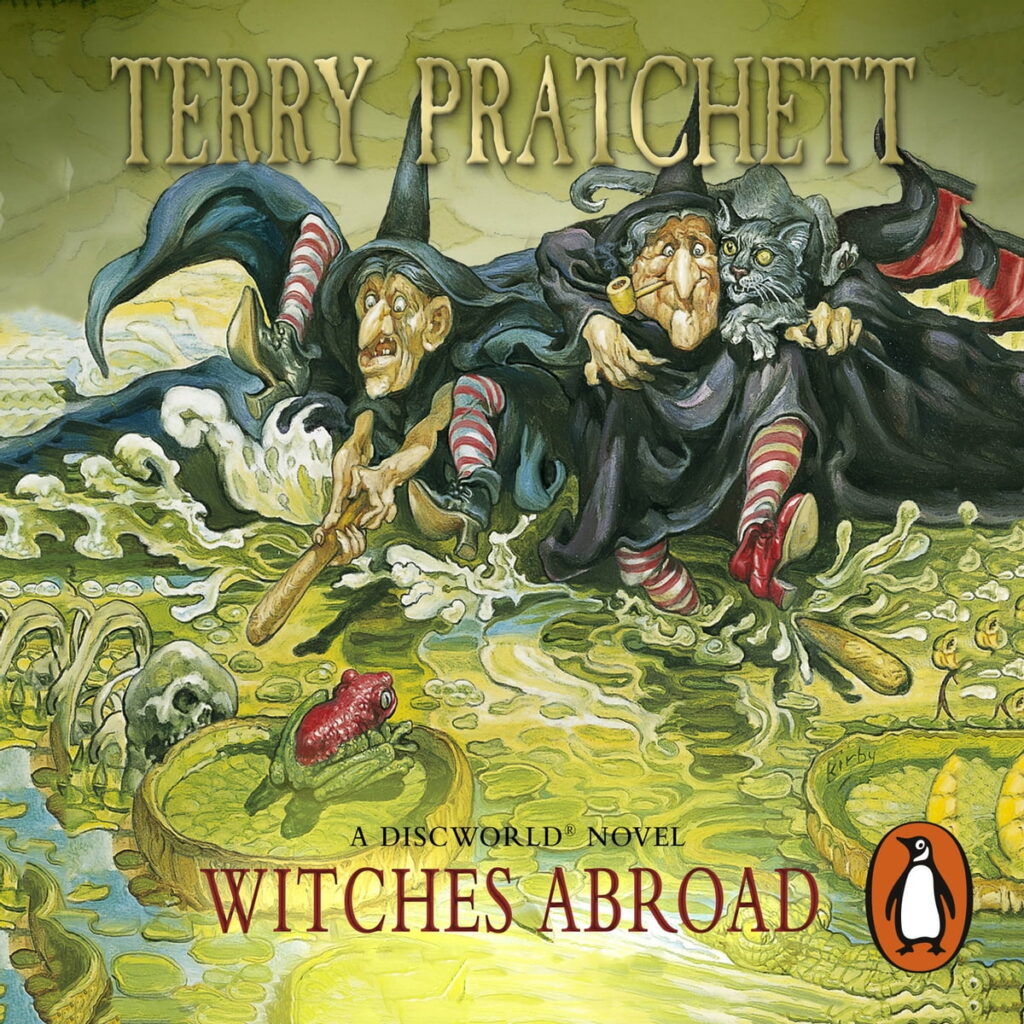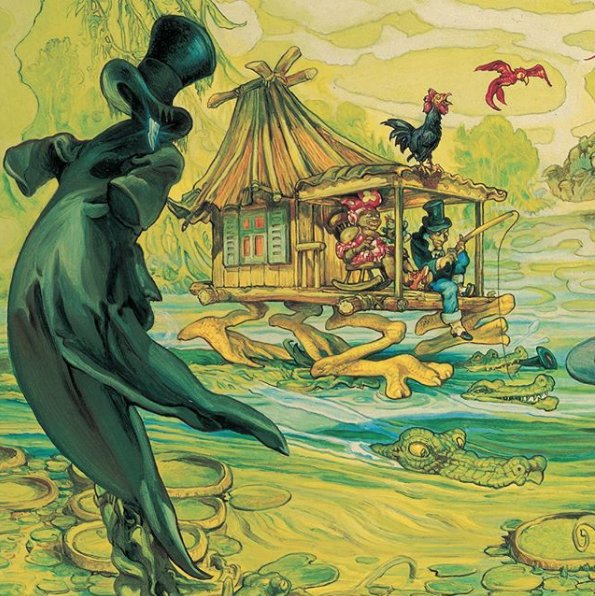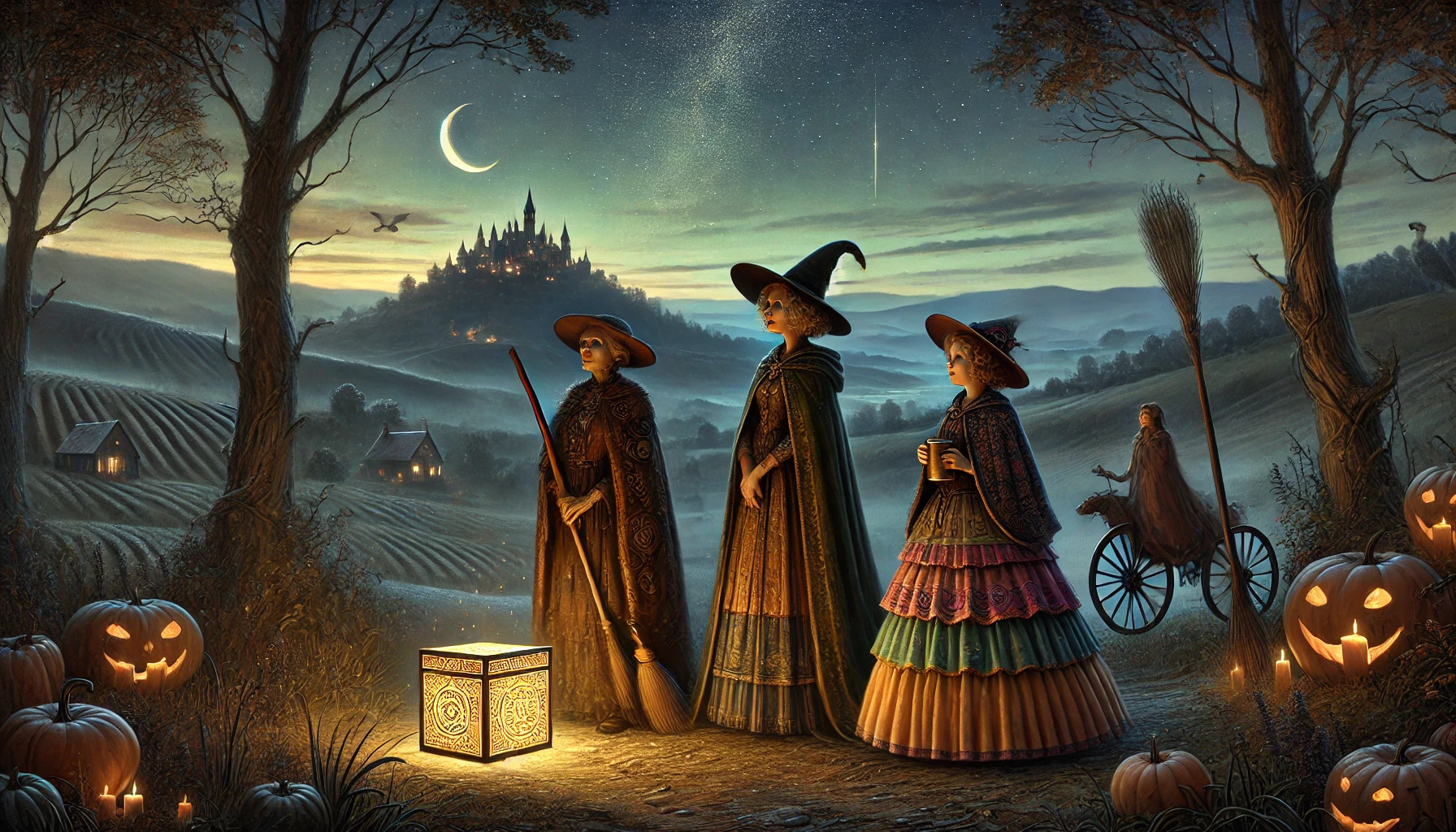Terry Pratchett, the beloved British author, is celebrated for his ability to blend sharp wit, intricate world-building, and profound social commentary into his expansive Discworld series. Among his numerous works, “Witches Abroad,” published in 1991, stands out as a particularly enchanting installment. This novel not only offers a delightful romp through fairy tale tropes but also delves deep into themes of storytelling, feminism, and the clash between tradition and modernity. In this article, we will explore the multifaceted layers of “Witches Abroad,” examining its plot, characters, themes, inspirations, subtext, and its place within both the Discworld universe and the broader literary landscape.
A Journey into the Discworld: Plot Overview
“Witches Abroad” is the ninth novel in the Discworld series and continues the adventures of the formidable trio of witches: Granny Weatherwax, Nanny Ogg, and Magrat Garlick. The story unfolds in the rural region of Lancre, a recurring setting in the Discworld, known for its witches and magical inhabitants.
The novel begins with Magrat Garlick, the youngest of the trio, aspiring to ascend from her role as a local witch to one of her predecessors, aspiring to be a “proper” witch of great renown. She yearns for a more glamorous and recognized position, influenced by her experiences with the fashionable magizoologist, Jinius Stokesby. When a mysterious visitor arrives with a magical box containing storybook fairy tales, Magrat becomes enchanted by the prospect of adventure and the promise of greater fame.
The central quest involves the witches traveling to the distant country of Genua, known as the “Fairyland,” to restore a storybook tale gone awry. Their mission is to ensure that the story of the tale remains true to its original form, thereby preventing it from spiraling into a nightmarish distortion. This journey takes them through various narrative landscapes, including adaptations of classic fairy tales like “Snow White” and “Beauty and the Beast,” each reimagined with Pratchett’s signature humor and depth.
Throughout their journey, the witches encounter a host of peculiar characters, face challenges that test their wisdom and resourcefulness, and confront the dangers posed by those who seek to manipulate stories for their gain. The narrative cleverly intertwines multiple storylines, creating a rich tapestry that explores the nature of storytelling itself.

Characters: A Cast of Witty and Wise Figures
One of Pratchett’s strengths lies in his ability to craft memorable characters, each with their distinct personalities and quirks. In “Witches Abroad,” the trio of witches serves as the central figures, each embodying different aspects of witchcraft and human nature.
Granny Weatherwax
Granny Weatherwax, perhaps the most formidable witch on Discworld, is a figure of immense wisdom, moral fortitude, and subtle power. Her no-nonsense demeanor masks a deep understanding of human nature and the complexities of magic. In “Witches Abroad,” Granny serves as the anchor of the group, often providing the necessary grounding when Magrat’s aspirations lead them astray. Her pragmatism and psychological insight are crucial in navigating the perils they face.
Nanny Ogg
Nanny Ogg brings a contrasting energy to the trio with her earthy humor, vivacious spirit, and a penchant for bawdy songs. She represents the more lighthearted and practical side of witchcraft, balancing Granny’s sternness and Magrat’s idealism. Nanny’s wisdom often comes wrapped in humor, making her both relatable and endearing. Her experience and connections in Lancre prove invaluable during their quest.
Magrat Garlick
Magrat Garlick, the youngest witch, embodies ambition and the desire for recognition. Her journey in “Witches Abroad” is as much about self-discovery as it is about the external mission. Magrat’s naivety and eagerness are often tested, forcing her to confront the realities of power, responsibility, and the importance of authentic leadership. Her character arc is a testament to personal growth and the acceptance of one’s true strengths.
Supporting Characters
“Witches Abroad” is populated with a host of supporting characters that enrich the narrative. Notably, Jinius Stokesby, the magizoologist who becomes entwined in their quest, adds a layer of complexity and intrigue. His charm and hidden agendas present both opportunities and challenges for the witches.
Another significant character is the storyteller Mustrum Ridcully, the Archchancellor of Unseen University, whose occasional interventions provide comic relief and unexpected assistance. The interplay between characters, both central and peripheral, creates a dynamic and engaging storyline that keeps readers invested.
Themes and Inspirations: The Fabric of Fairy Tales and Beyond
“Witches Abroad” is a rich exploration of several intertwined themes, many of which draw inspiration from traditional fairy tales, folklore, and modern societal issues. Pratchett uses the familiar framework of fairy tales to dissect and critique contemporary narratives, highlighting the power of storytelling and the ways in which stories shape our perceptions of reality.

The Power and Responsibility of Storytelling
At its core, “Witches Abroad” is an examination of the role of storytelling in society. The witches’ mission to preserve the integrity of fairy tales underscores the idea that stories are not mere entertainment but carry cultural and moral significance. Pratchett delves into how stories can influence behavior, uphold societal norms, and even manipulate perceptions.
The novel raises questions about who controls these narratives and the implications of altering them. The antagonists who seek to distort the tales for their purposes represent the dangers of unchecked narrative manipulation, paralleling real-world concerns about media influence and propaganda.
Feminism and Female Empowerment
Pratchett’s witches are embodiments of female strength, autonomy, and wisdom. In a genre traditionally dominated by male heroes, “Witches Abroad” centers on female protagonists who wield significant power and influence. The witches’ camaraderie, intelligence, and moral compass challenge stereotypical portrayals of women in literature.
Magrat’s character arc, in particular, touches on themes of self-worth and the quest for identity beyond societal expectations. Her journey reflects the struggles of many women striving for recognition and respect in various spheres, making the novel resonate with feminist undertones.
Tradition vs. Modernity
The tension between tradition and modernity is another prominent theme. The witches, steeped in ancient practices and wisdom, confront a world that is rapidly changing, where old tales are being commercialized and distorted. This clash mirrors real-world tensions where traditional values and modern innovations coexist uneasily.
Pratchett uses the witches’ quest to navigate and reconcile these tensions, suggesting that while change is inevitable, it must be approached with respect for the past and a commitment to preserving essential truths.
Satire and Social Commentary
As with many of Pratchett’s works, “Witches Abroad” employs satire to comment on societal norms and behaviors. The novel pokes fun at the commercialization of fairy tales, the superficiality of modern media, and the absurdities of bureaucratic systems. Through humor and irony, Pratchett critiques the ways in which stories are commodified and the impact this has on their authenticity and meaning.
Subtext: Layers Beneath the Surface
“Beneath its whimsical veneer, ‘Witches Abroad’ is layered with deeper subtexts that add complexity to the narrative. These underlying themes invite readers to reflect on broader societal issues and the human condition.
The Nature of Reality and Perception
The novel explores the subjective nature of reality and how perception shapes our understanding of the world. By navigating through various storybook lands, the witches encounter different interpretations of familiar tales, each colored by the perceptions and biases of those who tell them. This multiplicity of perspectives highlights the fluidity of reality and the role of narrative in constructing it.
Power Dynamics and Manipulation
The interactions between characters often revolve around power dynamics and manipulation. The witches must assert their authority and wisdom in the face of opposition, while other characters attempt to exert control over the narratives they encounter. This reflects real-world power struggles, where information and storytelling are tools for influence and dominance.
Identity and Self-Discovery
Magrat’s journey is emblematic of the broader theme of identity and self-discovery. Her quest to find her place and prove her worth mirrors the universal struggle of individuals seeking to understand themselves and their roles within society. This introspective element adds emotional depth to the narrative, making Magrat’s personal growth integral to the story’s progression.
The Interplay of Fate and Free Will
“Witches Abroad” also delves into the tension between fate and free will. While the witches are on a mission that seems predestined, their choices and actions significantly impact the outcome. This interplay raises questions about determinism and autonomy, suggesting that while certain paths may be laid out, individual agency plays a crucial role in shaping destiny.
Inspirations: Drawing from Fairy Tales and Beyond
Pratchett’s “Witches Abroad” is heavily inspired by classic fairy tales and folklore, but it also draws from a diverse array of sources, including literature, mythology, and contemporary culture.
Classic Fairy Tales
The novel is a homage to traditional fairy tales, weaving elements from stories like “Snow White,” “Cinderella,” and “Beauty and the Beast” into its narrative. Pratchett reimagines these tales, often subverting expectations and adding layers of complexity that challenge the simplicity of their original forms.
Urban Fantasy and Parody
“Witches Abroad” can also be seen as part of the urban fantasy genre, albeit with a distinct Discworld twist. Pratchett parodies and pays tribute to the conventions of the genre, blending magical elements with mundane settings in a way that is both humorous and thought-provoking.
Modern Media and Pop Culture
The novel reflects influences from modern media, particularly in its critique of commercialization and media manipulation. By portraying storybook lands as commodified and distorted, Pratchett comments on the pervasive influence of mass media and the ways it can distort authentic narratives.
Philosophical and Literary References
Pratchett’s work often incorporates philosophical ideas and literary references. In “Witches Abroad,” themes such as the nature of reality, the ethics of storytelling, and the balance between tradition and innovation echo philosophical debates about truth, narrative ethics, and cultural preservation.
Similar Books: Finding Kindred Spirits in Literature
For readers who find themselves enchanted by “Witches Abroad,” there are several other books within and outside the Discworld series that offer similar delights. These novels share themes of magic, satire, and a deep appreciation for storytelling.
Within the Discworld Series
- “Wyrd Sisters”: Preceding “Witches Abroad,” this novel also features Granny Weatherwax, Nanny Ogg, and Magrat Garlick. It revolves around the witches’ involvement in the kingdom’s political intrigue, blending fairy tale elements with Pratchett’s signature humor.
- “Equal Rites”: The third Discworld novel, introducing the character of Eskarina Smith, the first female wizard, and exploring themes of gender and power within the magical community.
- “The Wee Free Men”: Part of the Tiffany Aching subseries, this book delves into witchcraft from a younger perspective, maintaining Pratchett’s playful yet insightful approach to magic and folklore.
Outside the Discworld Series
- “Good Omens” by Neil Gaiman and Terry Pratchett: A collaborative work that combines Gaiman’s dark fantasy with Pratchett’s humor, offering a satirical take on the apocalypse and the nature of good and evil.
- “Stardust” by Neil Gaiman: This novel blends fairy tale elements with modern storytelling, creating a magical adventure that echoes the whimsical and subversive nature of “Witches Abroad.”
- “The Book of Three” by Lloyd Alexander: Part of the Chronicles of Prydain series, it incorporates mythic elements and a richly built world, similar to Pratchett’s intricate Discworld.
- “Jonathan Strange & Mr Norrell” by Susanna Clarke: A blend of historical fiction and fantasy, this novel explores the resurgence of magic in 19th-century England, with a deep appreciation for the power of stories and myth.
- “The Princess Bride” by William Goldman: A classic tale that parodies and celebrates fairy tale tropes, much like Pratchett’s approach in “Witches Abroad.”
Thematic Depth: Beyond the Surface Magic
While “Witches Abroad” delights with its playful narrative and magical escapades, its thematic depth ensures that it resonates on multiple levels, appealing to both casual readers and those seeking deeper literary engagement.
Storytelling as a Reflection of Culture
Pratchett posits that stories are a reflection of the culture from which they originate. By engaging with various storybook lands, the witches interact with different cultural narratives, highlighting how stories preserve and transmit cultural values, fears, and aspirations.
Moral Ambiguity and Ethical Complexity
Unlike traditional fairy tales that often present clear-cut morals and heroes, “Witches Abroad” embraces moral ambiguity and ethical complexity. Characters are multifaceted, motivations are nuanced, and outcomes are not always predictable. This approach invites readers to contemplate the grey areas of morality and the consequences of actions beyond simple dichotomies.
The Role of Women in Power
The witches in the novel are powerful, independent women who challenge traditional gender roles. Their authority is based on wisdom, experience, and a deep connection to their community, rather than physical strength or dominance. This portrayal serves as a critique of patriarchal structures and an affirmation of female agency.
Satirical Examination of Modern Society
Pratchett’s satire extends to various aspects of modern society, including consumerism, media sensationalism, and bureaucratic inefficiency. By exaggerating these elements within the fantastical setting, he highlights their absurdities and encourages readers to reflect on their own societal norms.
Literary Style: Pratchett’s Signature Blend
Terry Pratchett’s literary style is characterized by its sharp wit, clever wordplay, and a unique blend of humor and insight. In “Witches Abroad,” these elements are on full display, making the novel both entertaining and intellectually stimulating.
Humor and Satire
Pratchett’s humor is often dry, understated, and laced with irony. In “Witches Abroad,” he uses satire to critique societal issues without being overtly preachy. The humor arises naturally from the characters’ interactions, the absurdity of certain situations, and the playful subversion of fairy tale conventions.
Metafiction and Self-Referentiality
The novel employs metafictional techniques, acknowledging its own status as a story and playing with the conventions of narrative. This self-referentiality adds a layer of sophistication, inviting readers to think about the nature of stories and their construction.
Rich World-Building
Pratchett’s Discworld is a meticulously crafted universe, with its own rules, cultures, and histories. “Witches Abroad” expands this world further, introducing new locales and expanding on existing lore. The detailed world-building enhances the immersive quality of the novel, allowing readers to lose themselves in its magical settings.
Character-Driven Narrative
The strength of “Witches Abroad” lies in its character-driven narrative. The witches are not mere archetypes; they are fully realized individuals with distinct personalities, motivations, and growth arcs. Their interactions and development drive the story forward, making the plot both engaging and emotionally resonant.
Influence on Contemporary Fantasy
“Witches Abroad” has influenced contemporary fantasy writers who seek to blend humor, social commentary, and subversive takes on traditional narratives. Pratchett’s approach to world-building and character development serves as an inspiration for authors aiming to create nuanced and engaging fantasy worlds.
The Enduring Magic of “Witches Abroad”
Terry Pratchett’s “Witches Abroad” is more than just a whimsical adventure through fairy tale lands; it is a profound exploration of the power of stories, the complexities of human nature, and the enduring strength of female agency. Through its engaging plot, richly drawn characters, and incisive themes, the novel invites readers to reflect on the stories that shape our world and the roles we play within them.
Pratchett’s masterful blending of humor and depth ensures that “Witches Abroad” remains a beloved entry in the Discworld series and a significant work in the fantasy genre. Its enduring appeal lies in its ability to entertain while provoking thoughtful consideration of the narratives that define us. Whether you are a long-time fan of Discworld or a newcomer to Pratchett’s enchanting universe, “Witches Abroad” offers a magical journey that is as meaningful as it is delightful.
In the ever-expanding landscape of fantasy literature, “Witches Abroad” stands as a shining example of how stories can be both mirrors and molders of society, reflecting our values and shaping our imaginations. Terry Pratchett’s legacy is firmly secured through works like this, which continue to inspire and enchant readers around the world.


